
Theobroma cacao - Plant
(MRP Inclusive of all taxes)
- Shipping ₹79 for entire order
- Dispatch in 7 days
- Country of origin: India

(MRP Inclusive of all taxes)
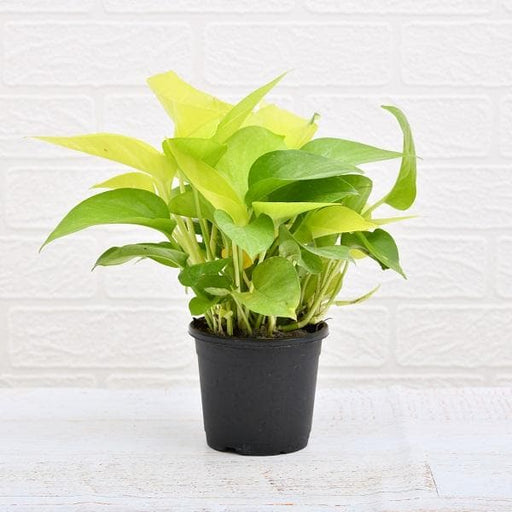 Save 29%
Save 29%
Air Purifier Money Plant with Pot The Air Purifier Money Plant, also known as Pothos or Epipremnum aureum, is a stunning indoor plant that...
View full details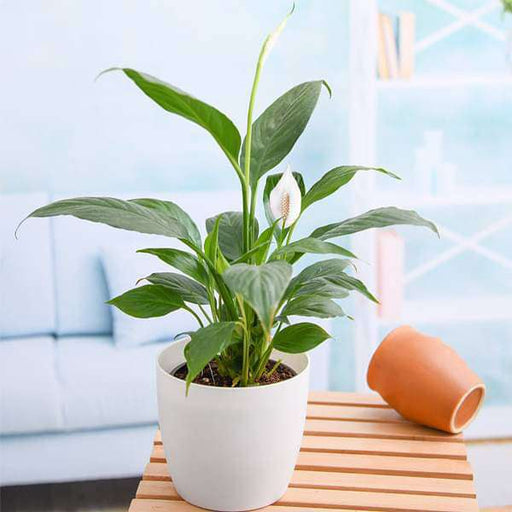
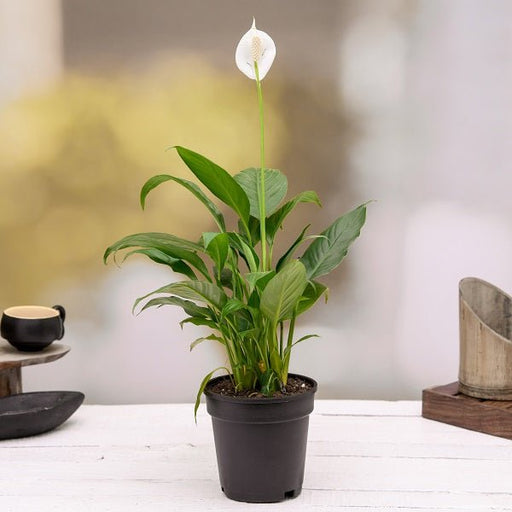 Save up to 15%
Save up to 15%
Peace Lily, Spathiphyllum - Plant The Peace Lily, scientifically known as Spathiphyllum, is a stunning houseplant celebrated for its elegant white...
View full details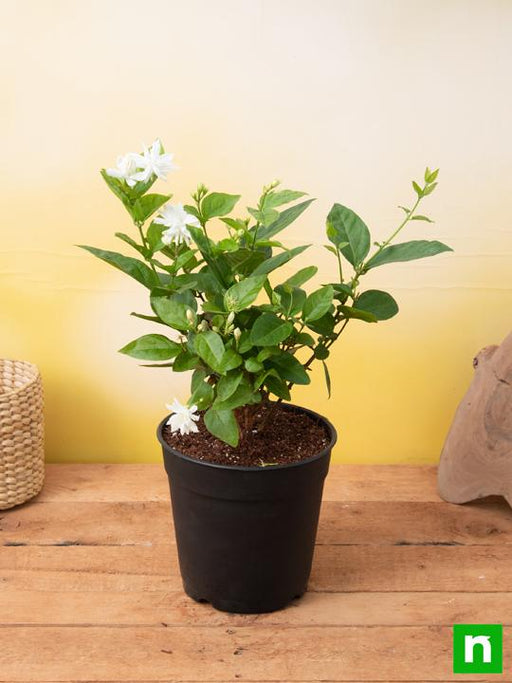
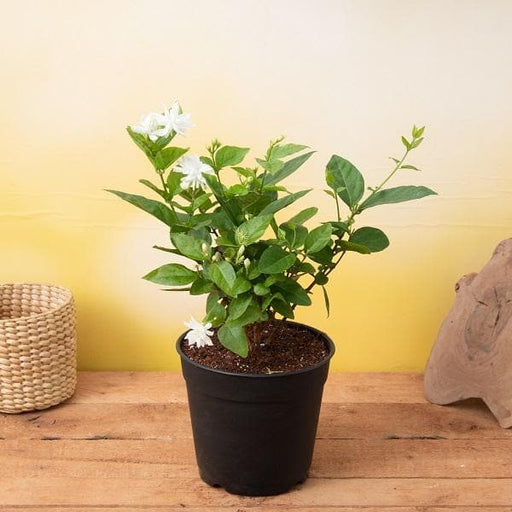 Save 25%
Save 25%
Jasminum sambac, Mogra, Arabian Jasmine - Plant Jasminum sambac, commonly known as Mogra or Arabian Jasmine, is a fragrant flowering plant...
View full details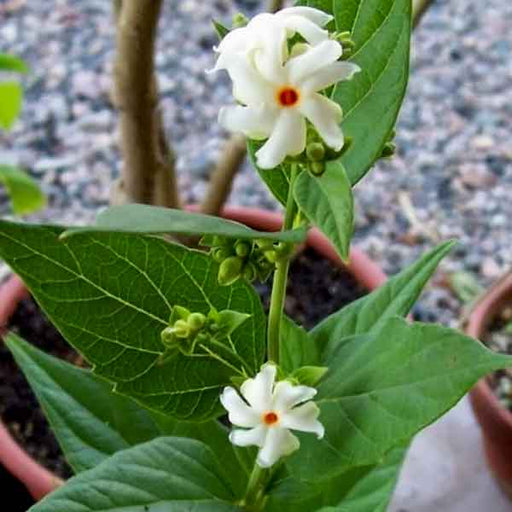
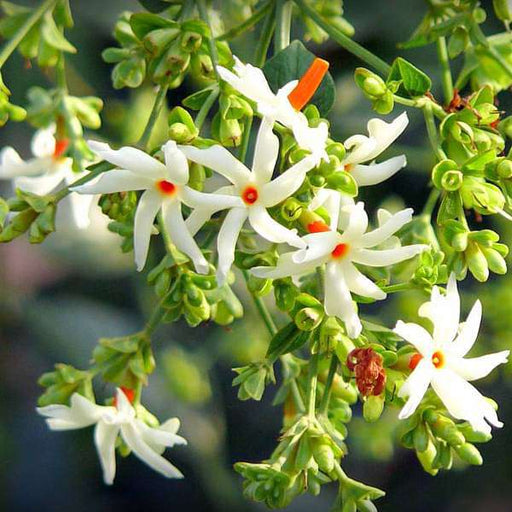 Save 18%
Save 18%
Combo Constituents Includes the Parijat Tree (Night-Flowering Jasmine), a culturally significant plant with fragrant flowers. Description The Pari...
View full details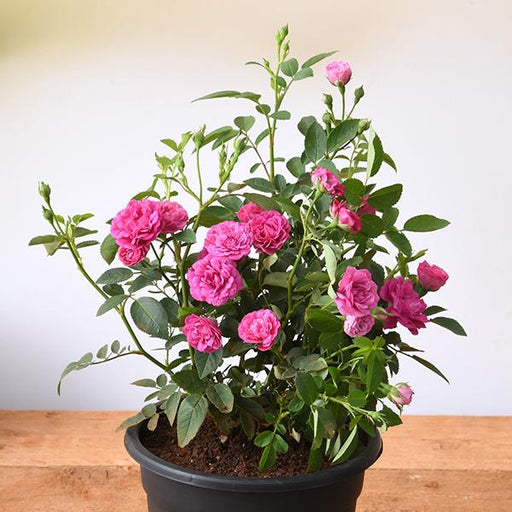
 Save 25%
Save 25%
Miniature Rose, Button Rose (Any Color) - Plant The Miniature Rose, also known as the Button Rose, is a charming and compact flowering plant that ...
View full details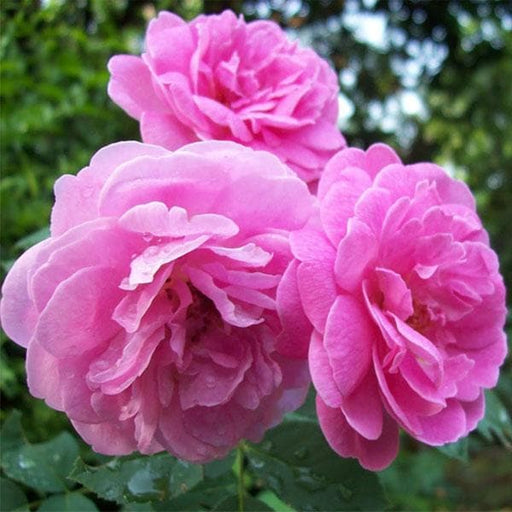 Save 25%
Save 25%
Damascus Rose, Scented Rose (Any Color) - Plant The Damascus Rose, also known as Rosa damascena, is a timeless symbol of beauty and romanc...
View full details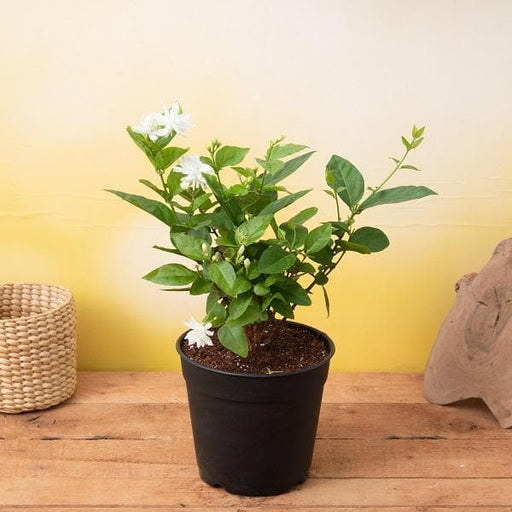
 Save 17%
Save 17%
Beautiful Fragrant Mogra, Arabian Jasmine Plant with Pot The Beautiful Fragrant Mogra, also known as Arabian Jasmine (Jasminum sambac), is...
View full details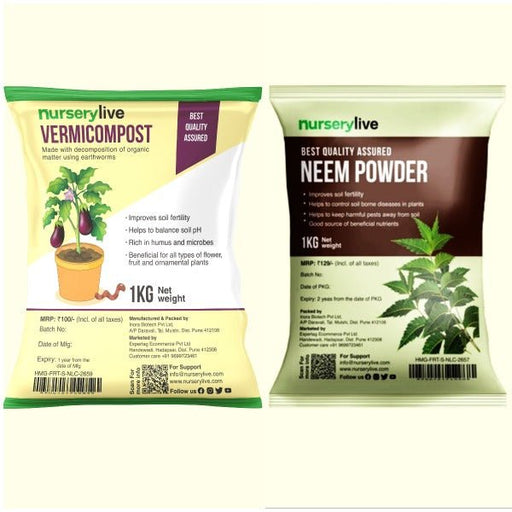 Save 15%
Save 15%
Pack of Vermicompost and Neem Cake for House Plants Transform your indoor garden with our premium Pack of Vermicompost and Neem Cake, spec...
View full details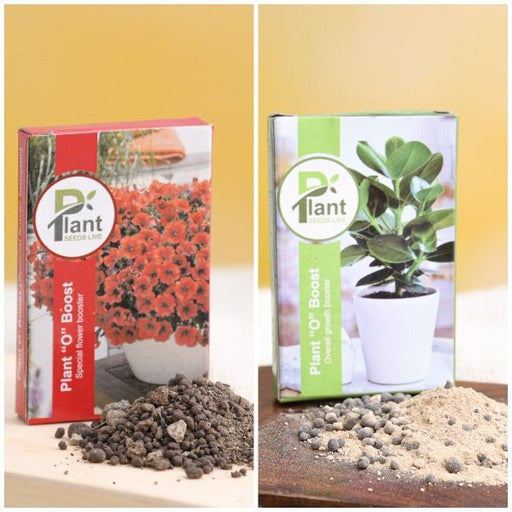
Pack of Plant Growth and Flower Boosters Unlock the full potential of your garden with our Pack of Plant Growth and Flower Boosters! This ...
View full details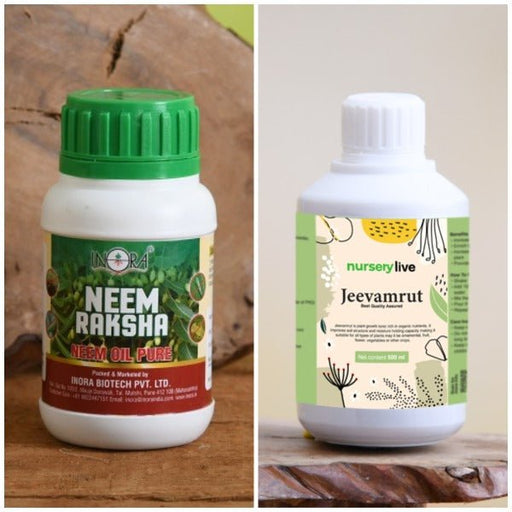 Save 38%
Save 38%
Combo of Jeevamrut and Neem Raksha for Easy Growth and Protection of Houseplants Transform your indoor garden with our exclusive combo of ...
View full details Save 22%
Save 22%
Plant Nutrients Kit (Pack of 16) for a Healthy Garden Transform your garden into a lush paradise with our Plant Nutrients Kit, featuring 1...
View full details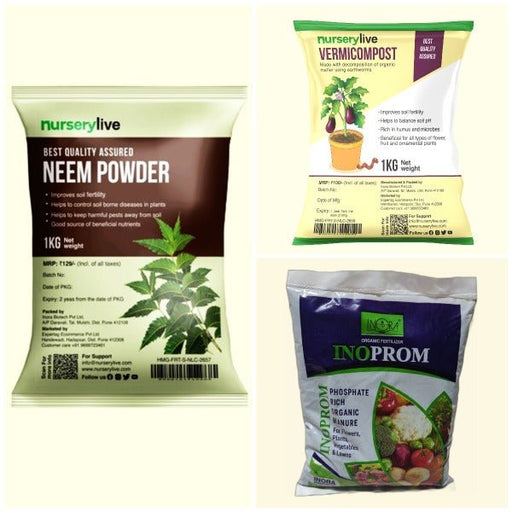 Save 16%
Save 16%
Combo of Top Plant Fertilizers Elevate your gardening game with our exclusive Combo of Top Plant Fertilizers, featuring two bags of premiu...
View full details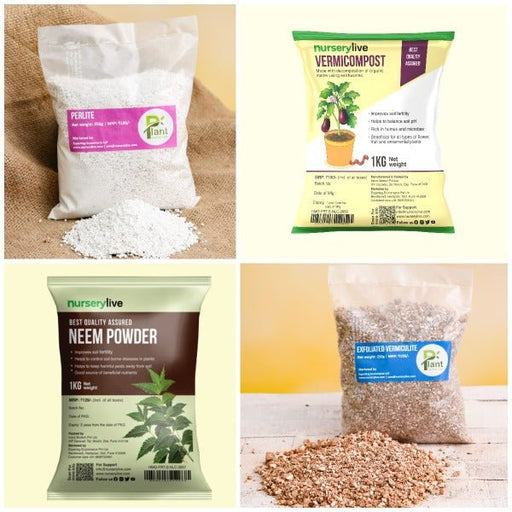 Save 24%
Save 24%
Pack of 4 Additives to Make Soil Healthy and Nutrient Rich Transform your garden into a thriving ecosystem with our Pack of 4 Additives de...
View full details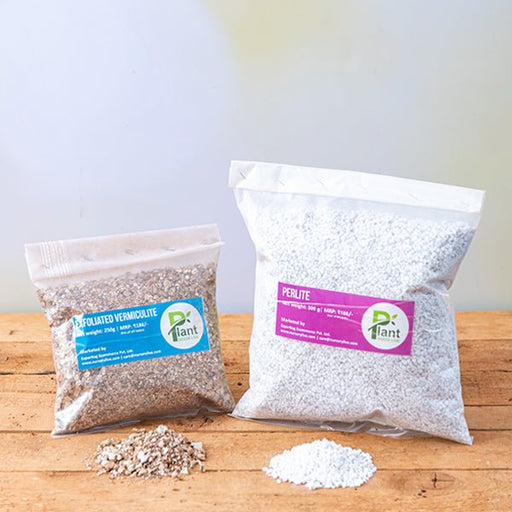 Save 30%
Save 30%
Transform your gardening experience with our premium Combo of Perlite and Vermiculite. This unique blend is designed to enhance soil aeration and ...
View full details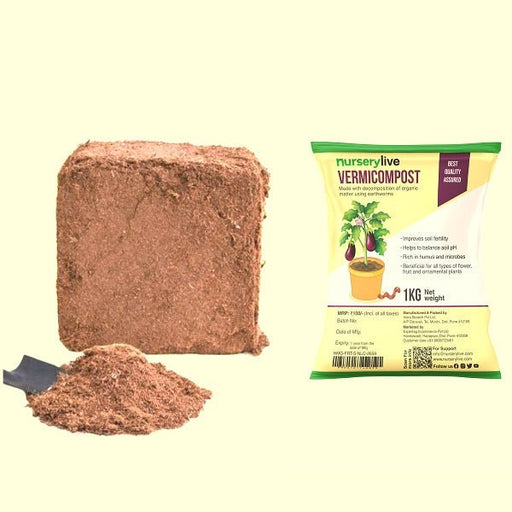 Save 27%
Save 27%
Combo of 2 Vermicompost and Cocopeat - Enrich Your Soil Naturally! Transform your garden into a thriving ecosystem with our Combo of 2 Ver...
View full details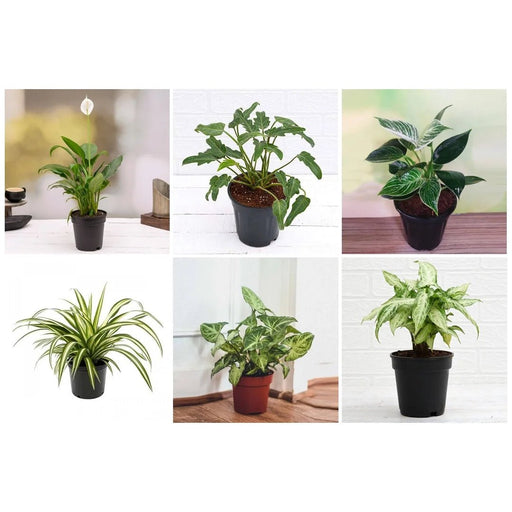
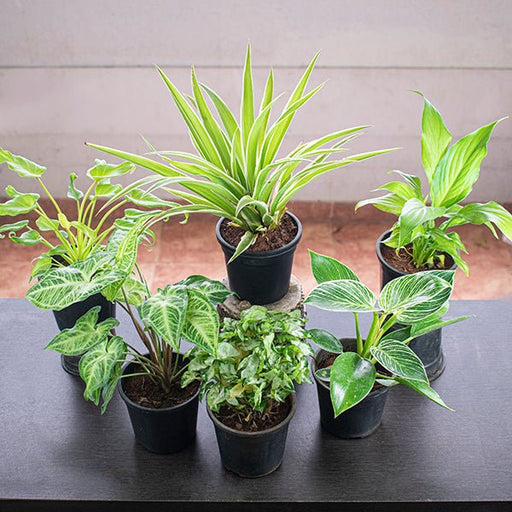 Save 35%
Save 35%
Best 6 Plants for Perfect Indoor Garden Transform your living space into a lush oasis with our curated collection of the Best 6 Plants for a...
View full details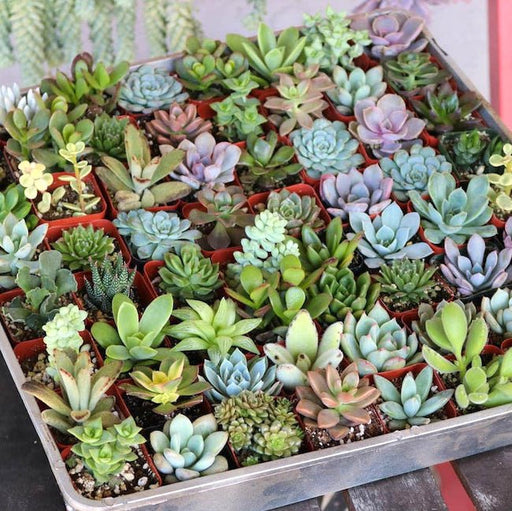
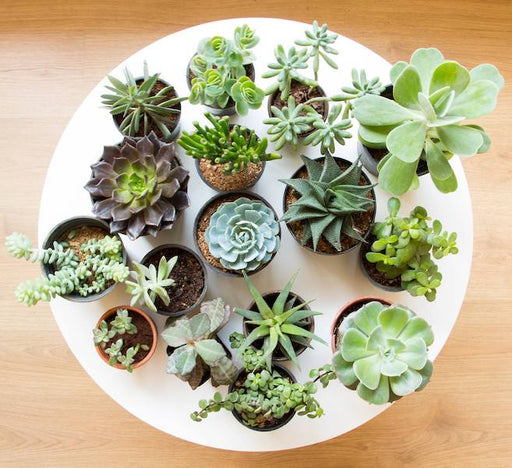 Save up to 50%
Save up to 50%
Mini Succulent Garden Pack Transform your space with our Mini Succulent Garden Pack, featuring a delightful collection of 4 any variety beautiful s...
View full details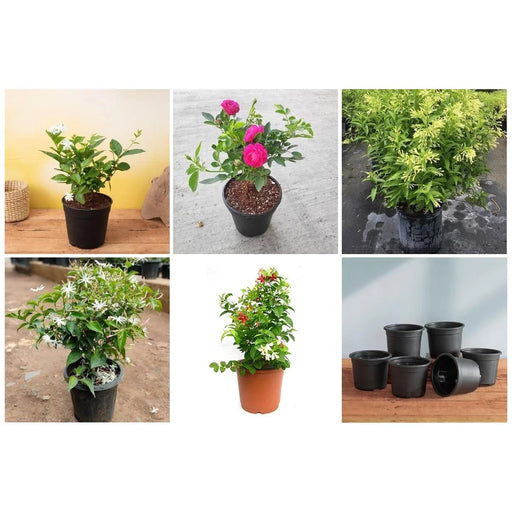
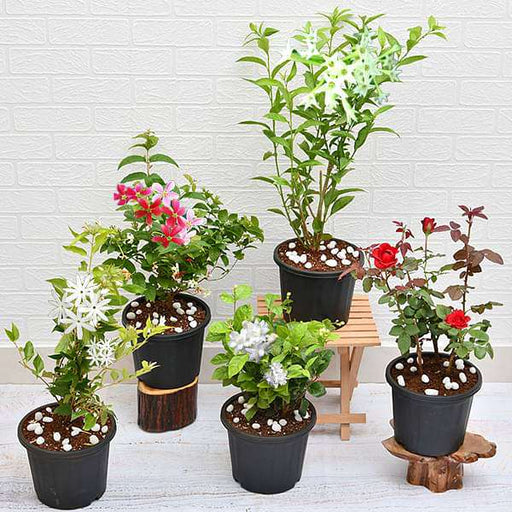 Save 30%
Save 30%
5 Best Fragrant Plants Transform your garden or indoor space into a fragrant paradise with our curated selection of the 5 Best Fragrant Plants. Th...
View full details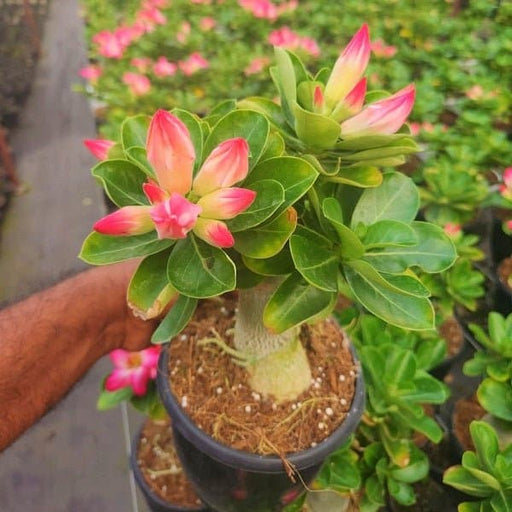
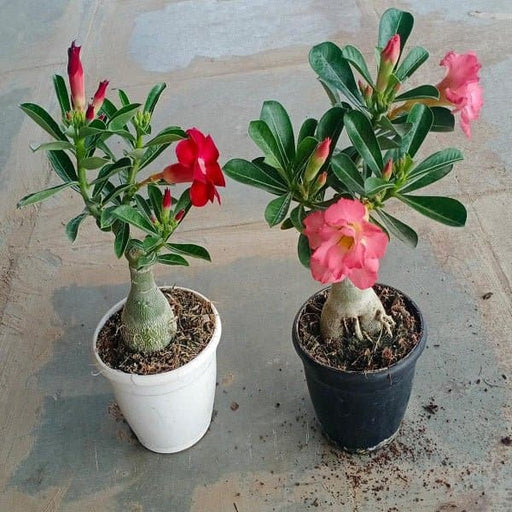 Save 24%
Save 24%
Set of 2 Bonsai Looking Grafted Adeniums Transform your indoor or outdoor space with our exquisite Set of 2 Bonsai Looking Grafted Adenium...
View full details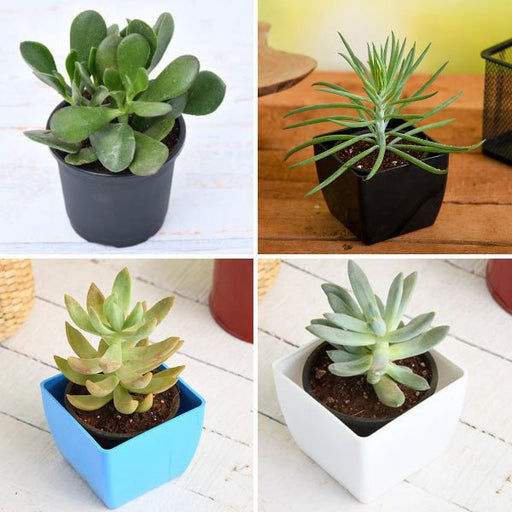 Save 45%
Save 45%
Top 4 Die Hard Succulents Pack Transform your indoor or outdoor space with our Top 4 Die Hard Succulents Pack, featuring a curated selecti...
View full details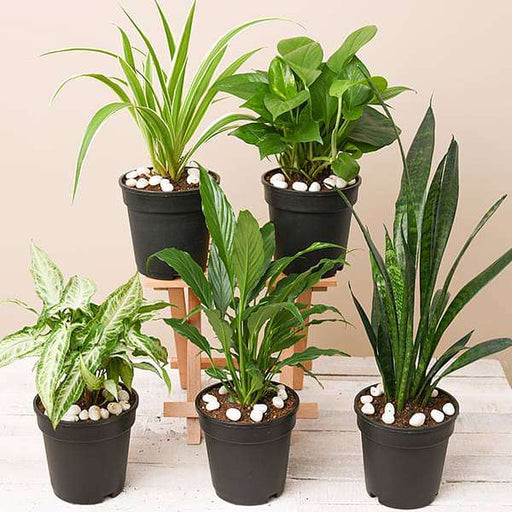
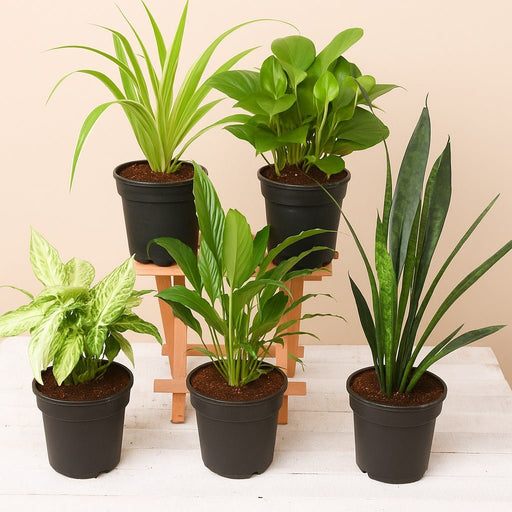 Save 30%
Save 30%
5 Best Indoor Plants Pack Transform your living space into a lush oasis with our '5 Best Indoor Plants Pack.' This carefully curated collection fe...
View full details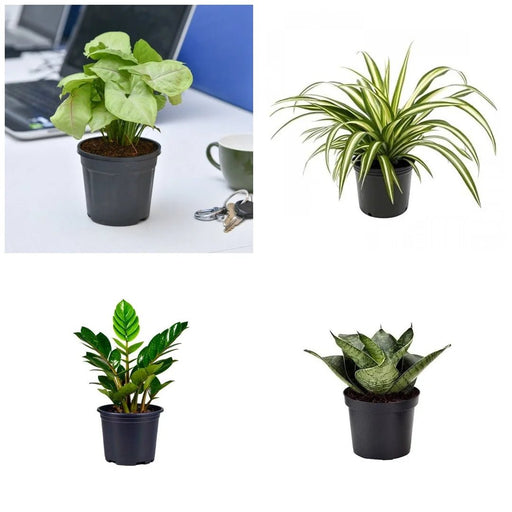
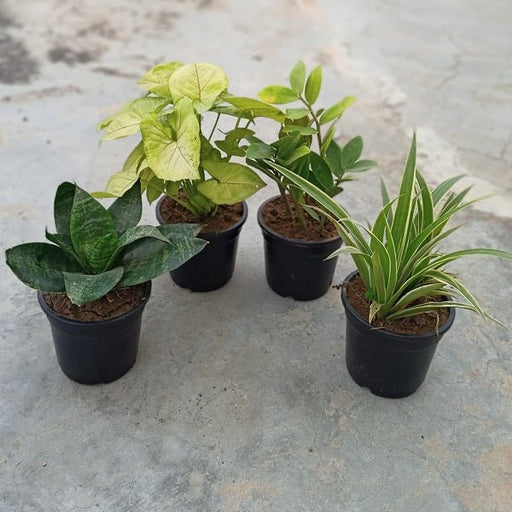 Save 25%
Save 25%
Set of 4 Evergreen Air Purifier Plant Pack Transform your indoor space into a lush, green oasis with our Set of 4 Evergreen Air Purifier Pla...
View full details| SrNo | Item Name |
|---|---|
| 1 | Theobroma cacao - Plant |
Theobroma cacao, commonly known as the cacao tree, is the source of chocolate and cocoa products. Native to the tropical regions of Central and South America, this small evergreen tree thrives in humid, shaded environments. The cacao pods contain seeds that are fermented, dried, roasted, and processed to create the beloved chocolate we know today. With its lush foliage and fragrant flowers, Theobroma cacao is not only a vital agricultural crop but also a stunning addition to any garden.
Theobroma cacao is often referred to as the "food of the gods," a name derived from its scientific nomenclature. This plant has been cultivated for over 3,000 years, playing a significant role in the cultures of ancient Mesoamerican civilizations. Beyond its historical significance, cacao is rich in flavonoids, which are known for their antioxidant properties, making it a healthful indulgence.
This unique plant produces beautiful, fragrant flowers directly from its trunk and branches, a phenomenon known as cauliflory. The cacao pods, which can vary in color from green to yellow to red, contain 20-50 seeds each, which are the basis for chocolate production. Theobroma cacao also supports biodiversity, providing habitat for various species in its native ecosystem.
The cultivation of Theobroma cacao can have both positive and negative environmental impacts. When grown sustainably, cacao can promote biodiversity and support local ecosystems. However, unsustainable farming practices can lead to deforestation and habitat loss. Choosing ethically sourced cacao helps protect the environment and supports fair trade practices.
Theobroma cacao, the plant that gives us chocolate, is not just a sweet treat; it’s a health powerhouse! Packed with antioxidants, it can boost your mood, improve heart health, and even enhance brain function. Who knew that indulging in chocolate could be a guilt-free pleasure? So, next time you savor a piece of dark chocolate, remember you’re not just indulging; you’re doing your body a favor.
chocolate!
Harvesting cacao pods is like a treasure hunt, but instead of gold, you find chocolate! These colorful pods hang from the tree, waiting to be plucked. Timing is everything; you want them ripe but not overripe. With a sharp machete in hand, you’ll feel like a chocolate pirate, claiming your bounty. Just be careful not to get too carried away; those pods can be slippery!
Fermentation is where the magic happens! After harvesting, cacao beans are fermented to develop their rich flavors. It’s like a party for the beans, where they mingle and transform into something extraordinary. This process can take several days, and the aroma wafting through the air is enough to make any chocolate lover swoon. Just remember, patience is key; good things come to those who wait!
Even the mighty Theobroma cacao isn’t immune to the occasional sniffle. Diseases like black pod rot and witches' broom can wreak havoc on your precious tree. But fear not! With proper care and a watchful eye, you can keep these pesky ailments at bay. Think of yourself as the plant’s superhero, swooping in to save the day with organic treatments and a sprinkle of love.
Want to grow your own chocolate factory? Propagating Theobroma cacao is your ticket! You can start from seeds or cuttings, but be prepared for a bit of a wait. These trees take their sweet time to bear fruit, but the anticipation only makes the chocolate taste better. Just remember to give them plenty of love and attention; they’re not just plants; they’re future chocolate dreams!
Turning Theobroma cacao into chocolate is a delicious journey. From bean to bar, the process involves roasting, grinding, and tempering. It’s like a culinary adventure where you get to play with flavors and textures. The best part? You get to taste-test along the way! So, roll up your sleeves and get ready to create your own chocolate masterpiece. Just don’t forget to share… or not!
Theobroma cacao thrives in tropical climates, where the sun shines, and the humidity is high. Think of it as the ultimate beach bum, soaking up the rays and enjoying a warm breeze. If you’re dreaming of growing your own cacao tree, make sure you live in a suitable zone. Otherwise, you might end up with a sad little plant longing for its tropical paradise.
Theobroma cacao trees can live for decades, making them the wise old sages of the plant world. With proper care, they can produce fruit for 25 years or more. That’s a lot of chocolate! Imagine the stories they could tell if they could talk. So, treat your cacao tree with respect, and it will reward you with a lifetime of deliciousness.
The flavor of cacao is as diverse as a box of chocolates! From fruity and floral to nutty and earthy, each variety offers a unique tasting experience. It’s like a flavor rollercoaster that takes your taste buds on an adventure. So, whether you prefer a bold dark chocolate or a creamy milk chocolate, there’s a cacao flavor out there just waiting to be discovered.
Just like any diva, Theobroma cacao can attract unwanted guests. Pests like aphids and mealybugs can be a nuisance, but with a little vigilance, you can keep them at bay. Think of yourself as the bouncer at an exclusive chocolate club, ensuring only the best guests are allowed in. A little neem oil or insecticidal soap can go a long way in maintaining the peace in your chocolate paradise.
Theobroma cacao is the scientific name for the cacao tree, the magical plant that gives us chocolate. Yes, the same one that makes your sweet tooth dance! This tropical tree thrives in humid climates and produces cacao pods, which house the precious beans that are transformed into chocolatey delights. Who knew a tree could be so sweet
Theobroma cacao loves a warm hug from the tropics! It flourishes in regions near the equator, particularly in West Africa, Central and South America, and Southeast Asia. These areas provide the perfect climate—think warm temperatures, high humidity, and plenty of rainfall. So, if you’re planning a cacao adventure, pack your sunscreen and head south!
Harvesting Theobroma cacao is like a treasure hunt! Farmers carefully cut the ripe cacao pods from the tree using machetes, then crack them open to reveal the precious beans inside. These beans are then fermented, dried, and roasted, transforming them into the chocolate we all adore. It’s a labor of love, but oh, so worth it!
Theobroma cacao isn’t just a treat; it’s a health hero! Packed with antioxidants, it can boost heart health, improve mood, and even enhance brain function. Dark chocolate, made from cacao, is known to lower blood pressure and improve circulation. So, indulge guilt-free—your heart will thank you, and your taste buds will throw a party!
Sustainability and Theobroma cacao are like chocolate and peanut butter—better together! Many farmers are adopting sustainable practices, such as agroforestry and organic farming, to protect the environment and ensure a steady cacao supply. Supporting fair trade cacao also helps farmers earn a living wage. So, when you indulge, choose wisely and save the planet one bite at a time!
Cacao and cocoa are like siblings with different personalities! Cacao refers to the raw beans and the tree itself, while cocoa is the processed version, often sweetened and used in chocolate products. Think of cacao as the pure, unrefined version, while cocoa is its more polished, dessert-ready sibling. Both are delicious, but one is a bit more virtuous!
Growing Theobroma cacao at home is a delightful challenge! If you live in a warm, humid climate, you might just be in luck. Cacao trees need plenty of sunlight, moisture, and well-draining soil. However, if you’re in a cooler area, consider growing it indoors in a pot. Just remember, no chocolate until the tree matures—patience is key!
Theobroma cacao faces a few pesky foes! Common pests include cacao pod borer, mealybugs, and aphids. These little troublemakers can wreak havoc on the trees and their precious pods. Farmers often use integrated pest management techniques to keep these pests at bay, ensuring that the cacao remains healthy and ready for chocolate-making. It’s a constant battle, but worth it!
Patience is a virtue when it comes to Theobroma cacao! After planting, it typically takes about 3 to 5 years for the tree to start producing fruit. Once it begins, it can yield pods for up to 25 years. So, if you’re planting one, get ready for a long-term relationship—chocolate is worth the wait!
Theobroma cacao thrives in a tropical paradise! It loves warm temperatures between 20-30°C (68-86°F), high humidity, and plenty of rainfall. Think of it as the diva of the plant world—needing just the right conditions to flourish. If you can’t provide a tropical getaway, consider a greenhouse. After all, every diva deserves a little pampering!
Theobroma cacao is a multitasker! Beyond its primary role in chocolate production, it’s used in cosmetics, health supplements, and even beverages. Cacao butter is a popular ingredient in skincare, while cacao powder adds a rich flavor to smoothies and baked goods. So, whether you’re indulging or beautifying, cacao has got you covered in style!